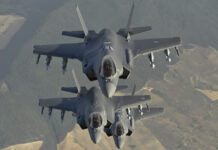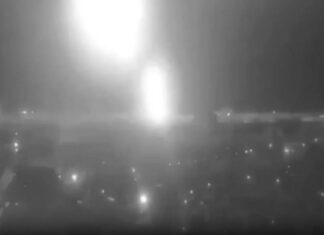The future light attack/armed reconnaissance aircraft (LAAR) will be fitted with an advanced sensor suite and multiple hardpoints to carry light support weapons, capable in independent finding, fixing and tracking targets, engaging these within a single asset platform. The Air Force considers aerial gunnery and precision weapon attacks to be ‘kinetic’ means in engaging targets rapidly, thus reducing the sensor-to-shooter timeline cycle. Furthermore, LAAR will also provide means to deliver direct fire from other platforms, coordinating fires directly with supported ground units, through voice, video and datalinks with other assets, creating synergies in minimizing fratricide danger.
(LAAR) Mission Package
The aircraft will carry ordnance and external stores on four underwing pylons. Typical air-to-ground ordnance will include an aerial cannon, two 500 lb class guided-munitions and a variety lighter weapons, such as 2.75″ (guided or unguided) rockets, rail-launched guided missiles (such as the Hellfire II), unguided free-fall munitions, flares etc. It will be capable operating on five – hour missions, flying distances of 900 nautical miles without refueling, up to a ceiling of 30,000 ft. The aircraft will operate from austere, forward operating bases, semi-prepared surfaces including dirt, grass, gravel, surfaces. Ground support operations are not rquired ro service the aircraft, – other than available field fuel stores available for re-fueling operations.
The aircraft will be capable of employing weapons from altitude up to 10,000 ft above ground level. To facilitate transition of high-altitude mountain ridgelines for operations in mountainous area, the aircraft could be prepared for operation under icing conditions, and be capable of generating oxygen through an On-board oxygen generating system (OBOGS).
Configured as tandem cockpit with duplicated controls and modern digital avionics, LAAR will be designed for day or night operation. The front cockpit will also be fitted with a HUD supporting air-to-ground functionality, displaying the continuously computed impact point (CCIP), continuously computed release point (CCRP), strafe, and manual weapon aiming computation/release.
The ISR systems on board will comprise a modern, stabilized multi-sensor electro-optical payload with geo-locating accuracy, integrating a day channel, night (thermal) channel, and multiple laser emitters, such as rangefinder, designator, target marker and spot-tracker. LAAR will be equipped with communications systems, integrating voice-and-data links, enabling simultaneous operation of three separate channels, in addition to multiple datalinks supporting transfer messaging, images and full motion -video supporting Remote Operations Video Enhanced Receiver (ROVER), operated by ground units and the ground forward air control / joint terminal attack control (FAC/JTAC) systems. LAAR will operate fully integrated with traditional Command and Control (C2) concepts and organizations, networked with current theater air tasking order (ATO) and airspace control order (ACO) dissemination networks. Furthermore, LAAR could also be tasked as part of joint teams, supporting ground or other aerial units.
To enhance the aircraft’s survivability in high-risk combat zones, the cockpit and engine compartment will be armored, protecting the crew and critical systems, against small arms ground fire. Zero altitude-zero airspeed ejection seats will offer maximum survivability for the crew in an emergency. Self-sealing fuel tanks will also be installed. The aircraft will also be equipped with a defensive measures suite, including radar warning receiver, missile approach warning system and countermeasures dispensers. To minimize infrared signature, LAAR aircraft could also be fitted with exhaust IR suppression systems.
Related Posts:



















